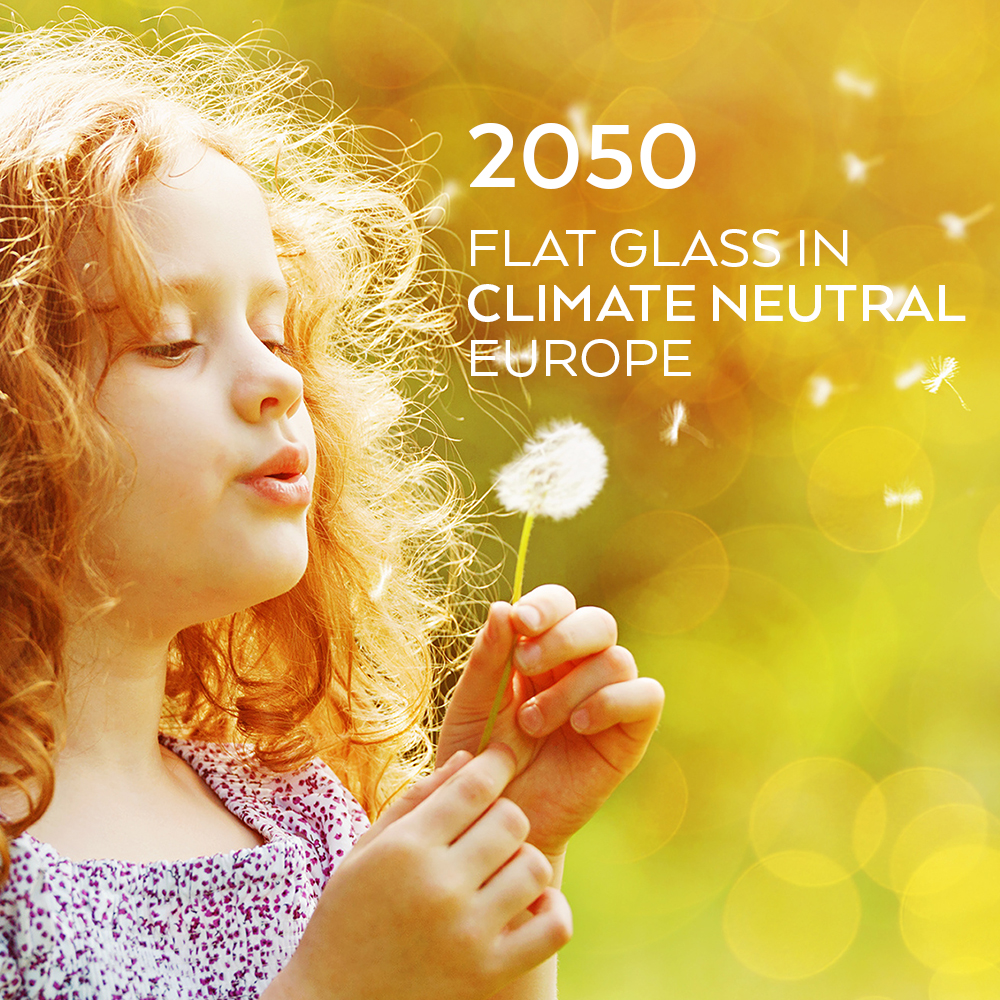Position paper on the proposed new Climate Law
The first step towards carbon neutrality
Glass for Europe, the trade association of Europe’s flat glass sector, welcomes the proposal from the European Commission to enshrine in law the objective for the EU to achieve climate-neutrality by 2050.
The flat glass sector has embraced the climate neutrality direction provided by the European Green Deal and issued in January 2020 its 2050 vision to maximize its contributions to this societal objective. In particular, the European flat glass sector takes it as its role to produce at a competitive price the materials essential for renovating Europe’s buildings, for supporting the clean mobility transition and for increasing the share of renewable solar energy in Europe. While already providing net carbon-avoidance products, the flat glass sector is looking into ways to massively scale up its contributions to the carbon neutral transition, including by developing novel ways to lower its industrial emissions.
In this context, Glass for Europe would like to highlight the following points concerning the proposed climate law.
- Reaching climate-neutrality by 2050 will require an unprecedented transformation of the European economy. Such a transformation can only be achieved if certainty and predictability is provided to bring all EU actors on board. Therefore, setting the climate neutrality objective by 2050 in law is a logical initial step to set the long-term direction and steer all relevant policies.
- Glass for Europe supports the proposal to enshrine in law the irreversible objective of the EU to become climate-neutral by 2050.Glass for Europe agrees that the European Union’s new trajectory needs to be complemented by intermediary targets. In order to ensure predictability, it is urgent that the intermediary targets are set rapidly. Glass for Europe urges the European Commission to propose revised targets for 2030 as soon as possible, considering the short time-frame available to cut emissions drastically in less than 10 years. At the same time, a discussion on intermediary targets for 2040 should be launched without waiting for 2030.
- Glass for Europe calls for 2030 targets to be reviewed without delay and calls for predictability to be provided to all EU actors by way of a trajectories and intermediary targets set once and for all.
- The sectorial dimension of targets is crucially important considering the new level of ambitions pursued by the EU. The expected contribution of each sector of the economy, i.e. housing, industry, transport, energy, etc., to the overall reduction objective need to be defined. The European Union, its’ Member States, economic actors and citizens need to have a clear understanding of where efforts need to be focused on the short, medium and long term. In setting those sectorial contributions, the availability of technologies and infrastructures, the magnitude of the changes required (e.g. legislative, business model, consumer behaviour), the time to proceed to adaptations and trade-offs between sectors, g. more building renovation will require more glazing production, need to considered.
- Glass for Europe calls for intermediary targets that clearly define sectorial contributions to the overall reduction objectives. Sectorial contributions should be based on CO2 emission reduction potentials, availability of technologies, feasibility and sectorial trade-offs.
- Ultimately, it is the measures to attain the objectives to be set in the climate law which will matter most. The proposed Climate law should already reflect on the next steps in two particular areas. First, the sequencing of the transition measures will be crucially important and should be prioritised for action. For instance, the availability of low-carbon energy sources needs to be guaranteed for an industrial actor to rely solely on this energy source for its operations. Infrastructures need to be available to provide certainty and secure investments in the transition. Second, because the carbon budget is limited, the climate law should already prioritise actions in those sectors where solutions to decrease emissions are already available and which offer a high reduction potential, such as the building sector. The objective of doubling the renovation rate should be made legally binding and the minimum performance requirements of building components upgraded to avoid carbon lock-in. In the sectors where solutions are not yet available, measures are urgently needed to unlock new CO2 savings reduction potentials, such as the support to research and the development of infrastructures.
- The climate law should already set out the priority measures to be engaged without delay to achieve the new objectives. In particular, it should sketch out a sequencing of transition measures and establish in law the urgency of renovation of Europe’s building stock.
Glass for Europe is eager to engage with policy makers on how the climate law can be improved to trigger a virtuous cycle of decarbonisation in Europe, as laid out in Glass for Europe’s 2050 vision of flat glass in a climate-neutral Europe.
For more information:
Flat glass in climate-neutral Europe
***





